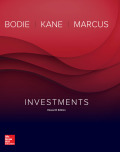
Concept explainers
Case summary:
Mary Smith is an analyst of Bank of Ireland, hired for analyze wineries of French wine industry and present a report for examines competition on wineries market. Mary Smith analyzed past five years record and examine profit margin, market share and cost management system. Mary smith identified four major French wineries available for wine industry and made a table for characteristics of such areas. After examination of records available, Mary smith identified few key points about the bargaining power of buyers of French consumer. Mary Smith presented draft report to Mr. Ron VanDriesen for review. Mr. Ron VanDriesen reviewed report and discussed about the strength and weakness of such areas. Then Mr. Ron VanDriesen asked Mary smith for few correction in report and few matters for further analysis.
Character in this case:
Mary Smith, Mr. Ron VanDriesen
Adequate information:
Mary Smith is analyst of Bank for analyzing wine industry.
To determine:
The smith's point that proves the statement that French customer has bargaining power.
Introduction:
As per smith's report, French consumer have strong bargaining power over the industry and mentioned few points which conclude bargaining power of French consumer with the label of "Bargaining Power of Buyers"
Want to see the full answer?
Check out a sample textbook solution
Chapter 17 Solutions
EBK INVESTMENTS
 Cornerstones of Cost Management (Cornerstones Ser...AccountingISBN:9781305970663Author:Don R. Hansen, Maryanne M. MowenPublisher:Cengage LearningBusiness Its Legal Ethical & Global EnvironmentAccountingISBN:9781305224414Author:JENNINGSPublisher:Cengage
Cornerstones of Cost Management (Cornerstones Ser...AccountingISBN:9781305970663Author:Don R. Hansen, Maryanne M. MowenPublisher:Cengage LearningBusiness Its Legal Ethical & Global EnvironmentAccountingISBN:9781305224414Author:JENNINGSPublisher:Cengage Managerial AccountingAccountingISBN:9781337912020Author:Carl Warren, Ph.d. Cma William B. TaylerPublisher:South-Western College Pub
Managerial AccountingAccountingISBN:9781337912020Author:Carl Warren, Ph.d. Cma William B. TaylerPublisher:South-Western College Pub Financial And Managerial AccountingAccountingISBN:9781337902663Author:WARREN, Carl S.Publisher:Cengage Learning,
Financial And Managerial AccountingAccountingISBN:9781337902663Author:WARREN, Carl S.Publisher:Cengage Learning,
 Intermediate Financial Management (MindTap Course...FinanceISBN:9781337395083Author:Eugene F. Brigham, Phillip R. DavesPublisher:Cengage Learning
Intermediate Financial Management (MindTap Course...FinanceISBN:9781337395083Author:Eugene F. Brigham, Phillip R. DavesPublisher:Cengage Learning





